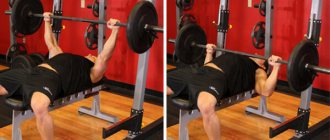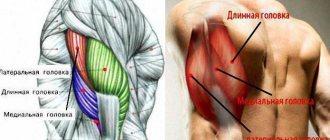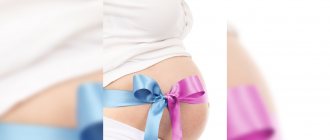Causes
A concave ribcage may be a congenital disorder. It occurs due to genetic disorders or due to improper formation of the skeleton during intrauterine development. This is recorded in 60% of cases.
Doctors cannot explain the appearance of a congenital deformity that is not related to heredity. Scientists believe that pathology develops under the influence of teratogenic factors. Its appearance is facilitated by:
- diaphragm pathology,
- sternum growth disorders,
- improper formation or growth of cartilage.
During life, pathology can develop as a result of rickets, emphysema, and scoliosis.
Sunken chests in men appear after suffering from tuberculosis, inflammation of the soft walls of the chest wall and pleura, tumors of the ribs and mediastinum. Doctors also name the following reasons for a sunken chest in a child:
- injury,
- sternum burn,
- heart defects.
The chest can be deformed after thoracoplasty and median sternotomy.
How to treat arthrosis of the thoracic spine?
Find out the difference between arthritis and arthrosis.
Breast shape and sexual character
What does the shape depend on? Many representatives of the stronger sex believe that there is a direct relationship between the shape and size of the breasts and a woman’s sexuality. In this classification, types of female breasts are compared to fragrant and tasty fruits. It probably also has a right to exist:
- Mammary glands, melons. The owners have rather large, slightly spaced and heavy breasts of size 4. It is believed that they especially appreciate sexual caresses and know how to give pleasure to their partner.
- Mammary glands, lemons. Beautiful cone-shaped breasts of sizes 2, 3, usually high with nipples pointing in different directions. A girl of this size puts everything in order and on a schedule. However, with a loving man, she is able to forget about this and completely relax.
- Mammary glands, pineapples. Equally wide at the base and bottom, size 5, which, however, does not sag. Since it is quite rare, it is considered exotic. Men in their fantasies imagine such women as sexually liberated, not afraid of bold experiments. In fact, they belong to romantic and vulnerable natures.
- Mammary glands, cherries. This is what they call small, firm girlish breasts. The nipples of the mammary gland point upward. This hints at a calm and reasonable character and the same moderate sexual activity.
- Mammary glands, oranges. Small spherical 2, 3 sizes. They are full and beautifully shaped. Their owners are chatterboxes who know how to organize a different life in any conditions. For them, the main thing is that their loved one has a delicious lunch and clean shirts. However, a skillful and loving partner can liberate her in bed.
- Pear-shaped type. In shape, they have a narrow base and a full-bodied lower part. Such cone-shaped breasts most often have a volume of 3 or 4 sizes. Women with such mammary glands are passionate, but not flighty. They are ready to reveal their potential only with mutual love.
Classification
A concave ribcage can be symmetrical or noticeable on only one side. The following deviations are usually diagnosed:
- funnel chest,
- cleft sternum,
- keeled chest,
- Poland syndrome.
Most often, children are diagnosed with pectus excavatum. It is observed in 85-90% of patients. Its sign is an indentation of the sternum, which leads to a decrease in the volume of the chest cavity. Subsequently, the patient’s heart becomes displaced and the spine becomes bent.
This pathology is not very pronounced when the sternum is pressed to a depth of 2 cm. In this case, the position of the patient’s heart does not change. If a depression of 2-4 cm is noticeable, this leads to a displacement of the heart by 3 cm. A deeper depression causes a displacement of the organ by more than 3 cm.
Keeled breasts are also called pigeon or chicken breasts. Its characteristic feature is the attachment of the ribs to the sternum at an angle of 90 degrees. This leads to an increase in the size of the chest. It is shaped like a keel. This pathology causes problems with breathing and the functioning of the cardiovascular system. It is diagnosed more often in boys. Depending on the degree of chest protrusion, it can be:
- costal type, when the deformation is almost invisible,
- manubriocostal, when the manubrium of the sternum protrudes and its body sinks,
- corpocostal type, a sign of which is a protrusion in the lower and sometimes the middle third of the sternum.
A cleft sternum is a congenital defect that occurs when the sternum does not close completely during embryonic development. Poland syndrome also occurs when embryonic development is disrupted. This diagnosis is made if some pectoral muscles or ribs are missing.
How to treat slipping rib syndrome?
Selection of underwear
Any shape of a woman's breast is beautiful and has a right to exist. Only very rare cases of asymmetry are subject to correction, as well as a large, heavy spherical mammary gland, which changes the position of the spinal bones and causes painful conditions.
As for the combination of breast shape and size, there are certain recommendations for choosing a bra:
- If a woman is a full size 4 or 5, and her mammary glands are tightly pressed together, then bras with a bridge that is not tightly connected to the bones cause discomfort. The best bras for such a woman are those in which the underwires only reach the middle and do not completely cover the gland. Linens with stitching in cups and plange type are also ideal.
- For slightly flattened breasts of size 3, 4, when the lower part is lowered, it is recommended to select bodices with cups sewn from several parts with a central seam in the lower part. This will provide the necessary lift.
- With a large and soft mammary gland of size 4, 5 with vessels protruding from under the skin and heavy downwards, it is quite difficult to choose the right bra. Such women should opt for cups made from several parts and the presence of side inserts in the product. They will provide the mammary gland with a rounded shape and elevation.
Symptoms
Depressed ribcage is usually diagnosed at birth. If the pathology is not very pronounced, the pediatrician notices the signs a little later. With age, the disease becomes more pronounced.
The funnel-shaped chest is characterized by specific breathing, when the ribs and sternum fall in when inhaling. Children with this pathology have a hard time withstanding physical activity and are prone to colds. Over time, they develop heart problems.
The disease leads to poor posture; patients have noticeable curvature of the ribs and sternum. The disease can be determined by the costal arches, which are raised with such a disorder. The pathology is accompanied by kyphosis and scoliosis. Other signs parents should pay attention to are a protruding abdomen, irritability, poor appetite, pale skin and slow weight gain.
With a keeled chest , as shown in the photo, the sternum protrudes strongly forward, and ribs 4-8 pairs fall back.
A sign of Poland syndrome is chest asymmetry, which is accompanied by underdevelopment of subcutaneous fat.
Anatomical structure of the mammary glands
Compared to other internal organs, the anatomy of the breast is not that complicated.
The mammary gland is a paired organ in the shape of hemispheres that are located symmetrically. They are located in the anterior region of the chest in the region of the 3-7 ribs.
The structure of the bust is represented by glandular lobes with a circular arrangement. Their number varies from 15 to 20.
The lobes are formed by small spheres that fit together just like grapes in a bunch.
The spheres are alveoli; it is in them that milk is synthesized during breastfeeding. The lobes are the unifying element for adipose and connective tissue.
Thanks to glandular cells, the structure of the human sternum acquires elasticity. The presence of a significant fat content makes the bust plastic and soft.
Today there is widespread information that breast volume can be increased through physical activity and long-term training using sports equipment.
To understand the reality, you need to study the structure of the sternum of women. The breasts themselves do not include muscle mass, as can be seen in the photo. It is for this reason that the mammary glands cannot be “pumped up” or adjusted in volume or shape. The chest is supported by flexible ligaments rather than by a muscular system.
The muscles are located under the mammary glands. When a lady performs special exercises, these muscles begin to sway and increase slightly. This is why the effect of increasing the bust itself is created. This will also give your breasts a slight lift.
Over the years, due to the action of gravity, the skin and ligaments experience stretching and begin to change, which ultimately leads to sagging breasts. The larger the size, the more pronounced the sagging will be.
Diagnostics
Pathologies of the chest are noticeable during a routine examination of the patient. It is necessary to determine the degree of its development, for which the volume of the cavity and the elasticity of the chest are measured. They do this using the following methods:
- CT,
- thoracometry,
- radiography.
To determine the degree of abnormalities in the respiratory and cardiovascular systems, consultation with a cardiologist and pulmonologist is required. The patient undergoes an electrocardiogram, echocardiography and spirometry.
#4 main bust characteristics
There are 4 main parameters by which the characteristics of the mammary glands are compiled:
- Location height. Low or high breasts can be depending on the characteristics of the fit on the chest. It is important to remember that low position and sagging that develops after lactation or in old age are different concepts.
- Density and elasticity. Ideal breasts are soft and firm. Pregnancy and breastfeeding have a negative impact on the shape of the bust. In this regard, density decreases and flabbiness appears. The only way to get rid of the problem is through plastic surgery.
- Base width. According to this parameter, narrow, wide, and medium mammary glands are distinguished.
- Volume. The bust can be flat, convex or retracted.
According to the listed parameters, not all women naturally have perfect breasts.
Treatment
A sunken chest is treated by orthopedists and traumatologists. Conservative medicine is powerless for such pathologies, so the patient most often undergoes surgery. If the deformities are mild, the patient's condition improves with the help of physical therapy.
Treatment in newborns
Treatment for newborns depends on the causes of the deformity. If the pathology is caused by a lack of vitamin D, it is necessary to replenish its amount.
If a hole is found in the chest of a baby, doctors try not to operate on it, trying to prevent further depression with the help of physical therapy and massage. Newborns are recommended to do the following exercises:
- abduction of arms to the sides,
- bending and straightening the knees, pulling them towards the chest.
Surgery is not performed on newborns, except in cases of real threat to life.
Treatment in adults
The patient is recommended to engage in swimming and breathing exercises.
The vacuum bell method has proven itself well in the treatment of sunken chest. Its essence is stretching out deformation using a vacuum created over it.
A set of exercises for adults
A sunken chest cannot be corrected by exercise. Sports activity is necessary to maintain the cardiovascular and respiratory systems in normal condition.
The exercises are performed to improve the mobility of the spine and chest, as well as restore posture. Stretching is also useful for this pathology.
Recommended complex:
- Standing on your knees, bend forward, stretching your arms, holding onto a support at a height of about 60 cm. You should feel a stretch in the shoulder and armpit.
- Standing sideways to the wall and holding it with your hand, turn your pelvis in the opposite direction.
- Bend to the sides in a sitting position, while holding one arm above your head.
- Bend your back from a position lying on your stomach, holding your hands behind your head. You need to hold the position for 8 seconds, doing 10 repetitions.
- Pushups. The most effective option is with a clap at the moment you lift your hands off the floor.
With a concave chest, yoga exercises are also practiced.
Surgery
In case of advanced pathology, an operation is performed with a dissection of the sternum or the cartilaginous part of the ribs. During surgery, some bones are removed, and plates and pins are used to fix the chest. In some cases, rib or muscle transplantation is required. The concave chest in women is masked with silicone implants.
Doctors recommend surgery for patients over 12 years of age with severe breathing and heart problems, as well as severe cosmetic defects. At this age, the chest is very elastic, and therefore rehabilitation is faster. The operation is not performed in the presence of chronic infections.
Type of breast and features of nature
What types of female breasts are there? Another classification is based on the dependence of a woman’s nature on the shape of the mammary gland, nipple and areola color. Can you believe this? Every woman has the right to decide this for herself.
- A small cone-shaped 0.1 size with a wide areola and protruding nipples belongs to idealists who are prone to daydreaming and have a rich inner world.
- A small and very elastic mammary gland with a moderate areola and equally elastic nipples is typical for naive and trusting individuals, in whom childhood plays for the rest of their lives. They are deceived quite often and are very worried about it. Vulnerability is combined in them with frivolity and self-doubt.
- Elastic, widely spaced small breasts of a dark color with a wide and well-defined areola and protruding nipples belong to hot beauties, passionate natures with very feminine features. They are not only seductive and desirable, but also good housewives, loving and attentive mothers.
- A small, elongated mammary gland with raised nipples with a dark areola hints that its owner knows how to quickly get close and find a common language with people. She is appreciated for her intelligence and sense of humor.
- Beautiful round breast size 3, elastic and toned with a moderate areola and a small nipple - the gold standard of the canons of beauty. Their owners are careerists in the good sense of the word, who are just as successful in the family.
- Large breasts, soft to the touch, beautifully shaped, with a small, well-defined areola and nipple belong to women who know how to express their beauty, who are sweet and charming, who value permanent relationships and family.
- Large dark mammary glands with nipples sticking out in different directions and a small areola characterize the owner as a cunning and calculating person who knows how to lie and seduce. Although, maybe these are just signs of a mysterious life that a woman does not want to reveal to the world.
- A large mammary gland, which is slightly blurred and has lost its shape, but has a beautiful outline with wide and non-protruding nipples, most often occurs in good mothers and wives who selflessly devote themselves to their family.
The world is beautiful in its diversity. It is necessary to appreciate and correctly present what is given at birth.
Recommendations for pumping up the inner chest
Let's look at the basic principles that allow you to pump up the middle of the pectoral muscles:
- Many chest exercises work the shoulder girdle and arm joints. Therefore, without a good warm-up and preparation, you cannot approach working weights.
- The basis of the training should be basic exercises performed in 3-4 sets of 8-12 times. Do insulating elements for 3-4 sets of 12-15 times.
- Increase the weight load periodically. Working with static weights will not bring results, as the chest muscles will quickly get used to and adapt.
- Add a classic bench press to your workout. This exercise helps to increase the overall volume of the pectoral muscles, using both the outer and inner sections of the chest.
- If you want to pump up your inner chest, one workout will not be enough. We recommend training 2 times a week, for example, on Monday and Friday.











